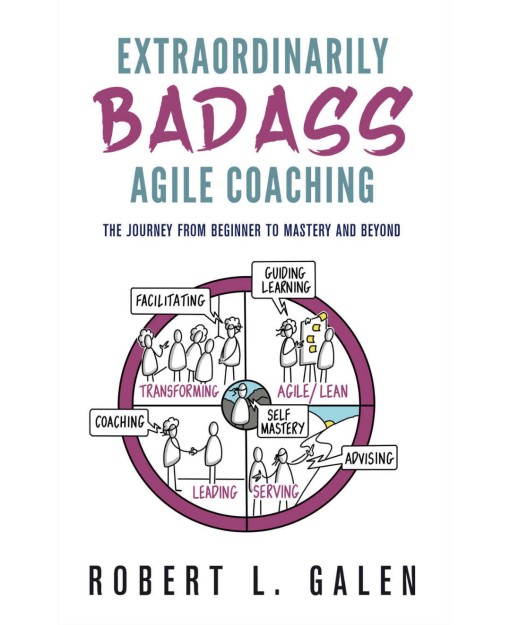
Even if you focus your agile coaching practice on teams you will need to coach up the managerial and executive hierarchy of the team. Chapter 11 of Badass Agile Coaching: The Journey from Beginner to Mastery and Beyond titled The Badass Agile Coach’s Guide to Coaching UP, provides guidance for coaches of all levels of experience.
I have an admission, in early my agile consulting career I was a little strident. I fell into the camp that viewed management outside of the team with suspicion and a little disdain. This is of course despite having been a manager and an executive. There were days when I may have embraced that stance because of my experience. Coaching up was not something I did well at that point; I had no empathy and I cut myself off from the power to make agility sustainable. Even if you believe that the team is the most important component of delivering value to the customer (a mistaken belief), without a partnership with managers and executives you will underperform. I can hear some of you shouting you are wrong, Tom, and then sharing experiences where a focus on the team has transformed whole organizations. Those experiences are real; I have one or two also. My experience shows that for every one success, there are more experiences that are far more frustrating and far less long-lived if you don’t partner with managers and executives. To be an extraordinary badass agile coach you need to learn and grow your sphere of coaching influence.
One of the most important points that I took from this chapter was a reminder that to coach anyone, you must first meet them where they are. Managers and executives live in a different day-to-day world than typical developers. The reasons are myriad. For example, consider how their compensation package might impact how they perceive the world around them or how the impact of their decisions impacts others. I am not suggesting that managers and executives are different subspecies of homo sapiens. I am suggesting that as a coach, you need to begin by being empathetic to their situation. You need to understand and relate to their environment. I have embraced a working approach to empathy provided by Chris Nurre in SPaMCAST 362:
The ability to put yourself in another person’s shoes is critical for a good coach because it helps the coach to accept the coachee on his or her own terms.
How you engage and the coaching stances you take will be different. Diving into a training stance or professional coaching stance will engender resistance. As with any coaching scenario, you need to first begin by establishing a relationship before you engage.
The second topic in the chapter that resonates with me during this read was the advice on the importance of speaking truth to power and then actively listening. I recommend refreshing yourself on our re-read of Crucial Conversations. If you are uncomfortable coaching upward you will view speaking truth to power as crazy talk. Listening, having hard conversations, and coaching upward requires you to be self-aware so that you can keep a clear mind and stay focused. What are you doing to understand yourself as a coach? Learning to coach upward begins with a journey of self-discovery not a fancy formula from a book or a model.
The third part of this chapter I found immediately useful. It was the approach Bob used to highlight the sample coaching conversations. Each started with observed behaviors and then enumerated a list of possible reasons that would have led to those behaviors. As a coach, laying out all the possible reasons why you think something is happening BEFORE you engage is an excellent approach to help think through how you will engage. This approach allows you to check your biases (we are back to that self-aware thing).
Managers and executives are integral players in embracing and sustaining agile within an organization. This is not just an agile thing, they are critical to make any change work for any length of time. As a coach, you need to learn to coach upward or partner with someone who can.
Buy a copy of Badass Agile Coaching: The Journey from Beginner to Mastery and Beyond and read along.
Source link
